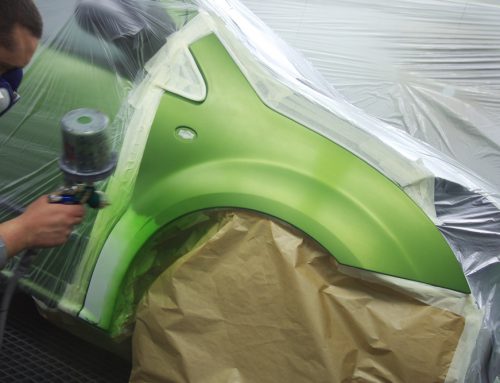You order a part from a recycler. It’s a nice quality A part. You even saw the picture. However, upon reception you realize that it’s more of a C or D quality part.
Your supplier may have oversold the part’s quality, or the part may have been damaged in transit, the reason doesn’t really matter. This even happens to the best recycled parts suppliers.
The fact remains that because of this incident, you either can’t start the repair, or it comes to a complete stop depending on your part-ordering process or if it is a supplement.
In the service of your shop’s performance, what should you do? Return the part and buy another one or repair the one you have on hand?
Of course, the insurer or the customer may get involved, but let’s imagine for a moment that you have all the power to decide what happens next. Change or repair? Let’s look at the pros and cons of both scenarios.
Scenario 1—Repairing the Part
Your level of occupation: Time is the most important resource in your workshop, it’s irreplaceable. If you are very busy, the labour credits and compensation you would get are usually not worth the time you will save by changing the part. Your opportunity cost is that your technician does not start a new repair.
On the other hand, if it is the low season or you have a low occupancy rate, taking the extra time to repair the part is an excellent option, as you have no other added value alternatives.
When to repair the part: If you take care of the part now, the repair will have a very small impact on your key-to-key cycle time. If you cannot take on the repair now because your technician is busy, your key-to-key cycle time will be impacted for this vehicle.
The required technician: You often paralyze a good technician to repair a door, so he is not used for any other value-added task. So, before you start the repair, you need to ask yourself whether the resource you assign will not just turn this small repair into a nightmare due to lack of experience. You are also increasing the risk of having the repair warranty returned.
Scenario 2—Changing the Part
Financially: This is a more expensive option for the customer (it may not be a great margin depending on the length of the repair required), but it is more valuable to you, especially if you have a business model where you make very little profit on parts and your shop is running at maximum capacity.
The required technician: It could be any of your technicians in charge of reassembly. A novice can easily handle this task.
The required time: If you order parts before the repair, you may be able to adjust without impacting your key-to-key cycle time. However, if you are not very disciplined in ordering parts or if it’s a supplement, your cycle time could be affected from 24 to 36 h depending on the quality of your suppliers.
Part availability: If the good quality new or aftermarket part is not available, the repair scenario might be the best one after all.
Recommendations for Performance
Recommendation 1:
If you are operating at full capacity and want to perform, the recommendation is to buy a new part with the agreement of the customer or the insurer. In some cases, you can also compensate with an aftermarket part, provided you have absolute confidence in the product that will be delivered.
Recommendation 2:
If things are slow at the shop and you trust the skills of the person who will repair the part, then we recommend going ahead with the repair.





